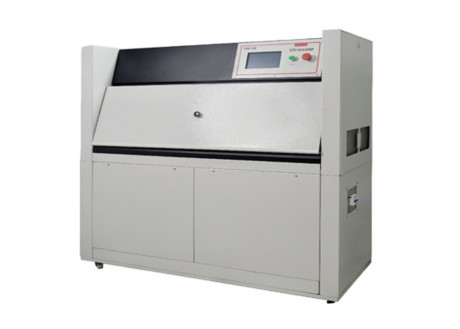How to Choose Accelerated Weathering Tester Temperature Points?
According to the material properties
Thermal stability: understand the thermal transition temperature of the material, such as the glass transition temperature, melting point. For good thermal stability of the material, you can choose a relatively high temperature point for accelerated aging test, but generally should not exceed the maximum temperature that the material can withstand. For example, the glass transition temperature of some engineering plastics is high, and the test can be conducted near or slightly above its glass transition temperature.
Chemical structure and composition: different chemical structure and composition of the material's sensitivity to temperature is different. Materials containing easily decomposable chemical bonds or groups, such as some polymers containing ester bonds, may be more susceptible to degradation reactions at high temperatures, and a relatively low temperature point should be selected; while for materials with stable chemical structure, the temperature point can be increased appropriately.
Influence of additives: Antioxidants, light stabilizers, fillers and other additives added to the material will affect the aging performance and response to temperature. Materials containing highly effective antioxidants may require higher temperatures to achieve significant aging effects, and the role of the additives and their stability at different temperatures need to be considered when selecting the temperature point.
Depending on the purpose of the test
Simulation of actual use: If the purpose of the test is to evaluate the aging performance of a material in a specific actual use environment, a temperature point similar to or slightly higher than the actual use temperature should be selected. For example, for the accelerated aging test of outdoor construction materials, a temperature range of 50℃-80℃ can be selected with reference to the local maximum and average temperatures.
Rapid screening of materials: In the early stage of material development or quality control, in order to quickly screen out materials with poor aging resistance, higher temperature points can be selected for accelerated aging test to shorten the test time. However, it should be noted that this high-temperature screening test may have a certain deviation from the actual use of the situation, and subsequent tests closer to the actual conditions need to be verified.
Research on aging mechanism: For tests to study the aging mechanism of materials, it may be necessary to conduct tests at different temperature points to observe the aging behavior and reaction kinetics of materials under different temperature conditions. A series of temperature points, including lower, medium and higher temperatures, such as 30°C, 50°C, 70°C, etc., are usually selected to determine the effect of temperature on the aging process through comparative analysis.

Reference to relevant standards and specifications
Industry standards: Different industries have formulated standards and specifications for the accelerated aging test of various materials, and these standards usually specify the temperature point or temperature range of the test. For example, in the automotive industry, for the accelerated aging test of automotive interior materials, you may refer to standards such as ISO 105-A02, which specifies the temperature parameters under different test conditions.
International and national standards: For example, the ASTM D4799 standard specifies temperature points and test cycles for accelerated aging tests on asphalt materials.
Consider equipment performance and test conditions
Equipment temperature uniformity: Ensure that the selected temperature point in the test equipment can achieve good temperature uniformity, to avoid deviations in test results due to temperature differences within the equipment. Before the test, the equipment can be tested for temperature uniformity, and based on the test results, the placement of samples can be adjusted or appropriate temperature points can be selected.
Matching of other conditions such as humidity and light: Accelerated aging test usually involves other environmental factors such as humidity, light, etc., and the interaction and synergistic effect of these factors and temperature need to be considered when selecting the temperature point.
2024-12-17 14:14
- Related News
FAQs about Garment processing equipment
What is the Vertical Flame Test?
What is a needle flame tester?
What is a Dry Microbial Penetration Tester?
Top 10 Fiber Fineness Testing Instruments
Top 10 Penetration & Permeability Testing Instruments
Top 10 Comfort Testing Instruments
